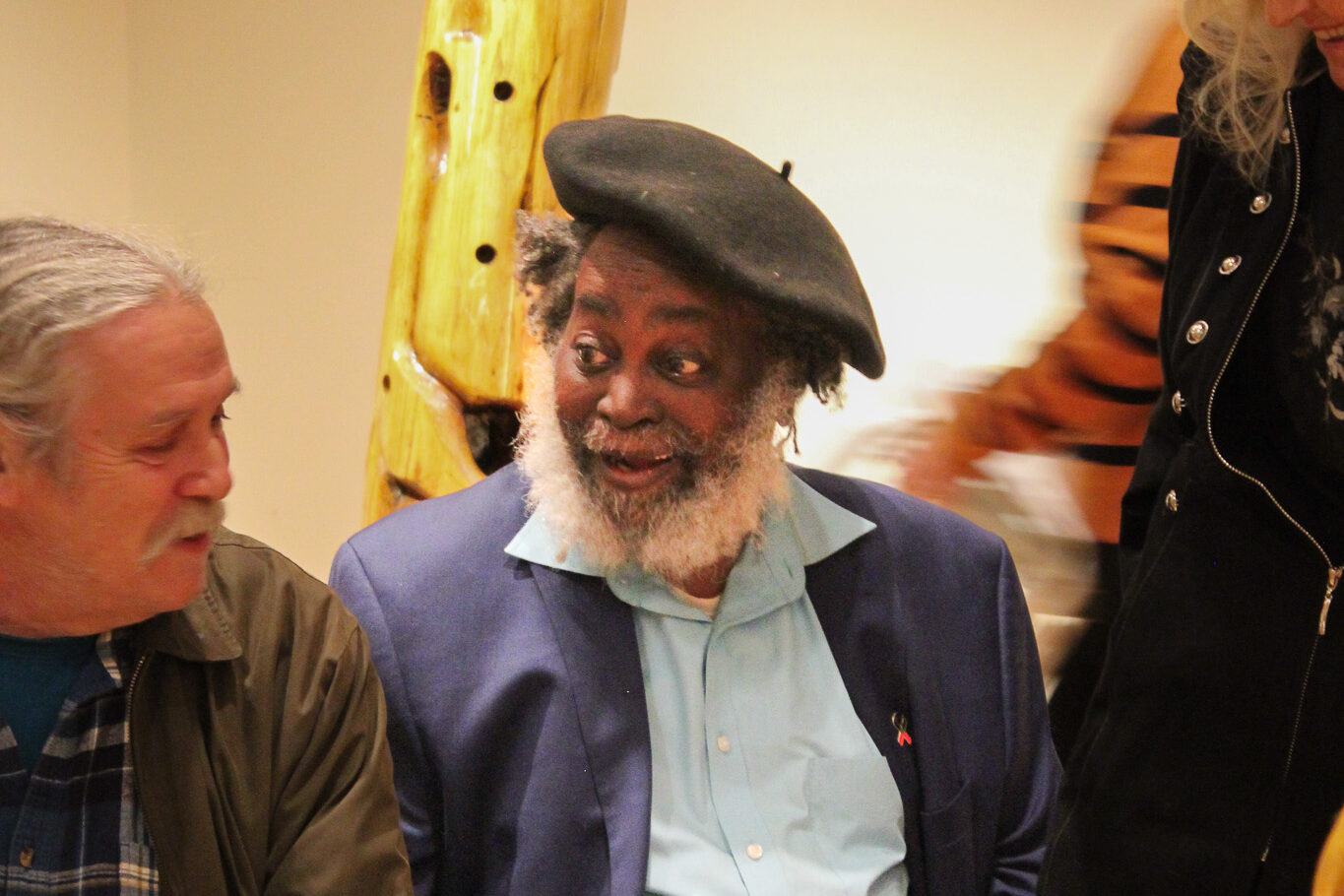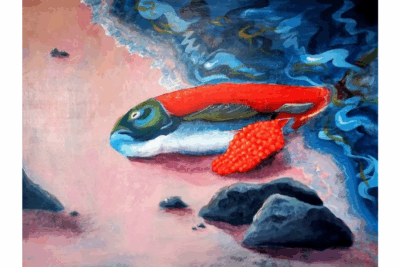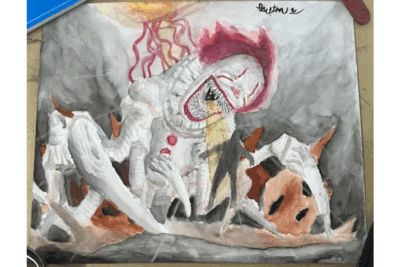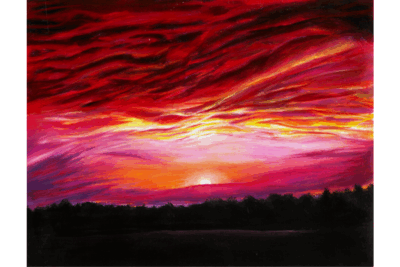Sunday, Nov. 17, the Hershberger Art Gallery hosted a reception for local artist Jake Webster’s exhibit, “A Conversation between Agony and Grief.” The reception was full of a mix of colleagues, community members and students.
Growing up in Mississippi, Webster noted the presence of social movements and general systemic violence in his upbringing. In his youth, Webster thought that art of the time should reflect not just tragedies around him, but the way people continued to live in both ordinary and remarkable ways.“Somehow, nobody around me was making art about that,” he said to the audience.
Webster began to take up the mantle himself. He started off as a painter, then after a trip to Europe, he began to rethink his approach.
“By the time I got back to the airport in New York, I threw my paint brushes in the trash can,” he confessed. “I still draw and paint, but I don’t care if no one ever sees a painting of mine.”
From there, Webster moved to South Bend, where he began to work with less conventional materials, including aerated cement. When access to aerated cement became limited, Webster prioritized wood.
His inspiration comes from many things, including Christianity, political issues and his “biggest influence:” Dame Barbara Hepworth, a British sculptor known for her Modernist works.
Throughout his life, Webster’s impact on others has been vast, and his work only serves to further this. “I make art for my friends. I make art for my family,” Webster posed. “We ask a lot of each other. We might get angry, we might get upset. But art says, ‘No, no, no, don’t get upset.’ You can talk about difficult things.”
Indeed, the theme of the exhibit, agony and grief, carries heavy weight. To Webster, the act of creating art serves as a way to explore feelings, but sharing it changes the dynamic. “I make art to share. Art is public. When you make art private, it’s therapy.”
Still, something therapeutic remains in the exhibit, with an opening perhaps indicative of a new energy in the local art scene.
“This is the most full I’ve seen the gallery in a while,” said Sara Method, the Head of the Goshen College Art Department, “I’m really excited about it.”
Earlier this year, the Hershberger Art Gallery hosted photography, graphic design and alumni exhibits. Now, if you look inside, you will find a collection of sculptures unlike anything you have ever seen before. Imposing figures of wood, often combined with nails, wire or screws, stand around the room, inviting you to reflect on each one.
Matija Margetic. a junior film production major, said, “I really liked the sculptures that depict certain emotions, they speak to the feelings in a really interesting way. I thought it was kind of clever to depict emotions or interpret them in that way.”
If there’s one thing to take from Webster’s gallery, it’s the way discussion plays a key role in healing or growing through grief. As people examined Webster’s exhibit, the weight of the world felt a little less, united under a collective understanding.
Sophia Yoder, a sophomore film production major, said, “Art is something that allows people to be present in the moment, thinking about the art piece, I think this experience is special.”
“It means the world that I can share my work,” Webster shared, looking out at a lobby full of those there to celebrate his work, there to engage in a larger discussion prompted by each piece.
“A Conversation between Agony and Grief” will remain open in the Hershberger Art Gallery from now until Jan. 5, 2025.



